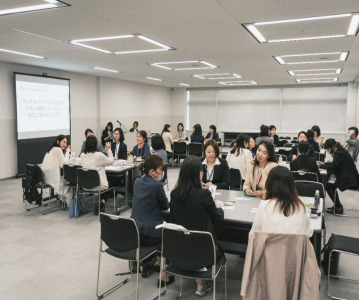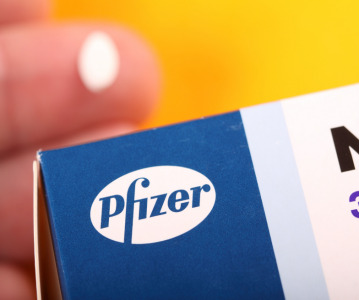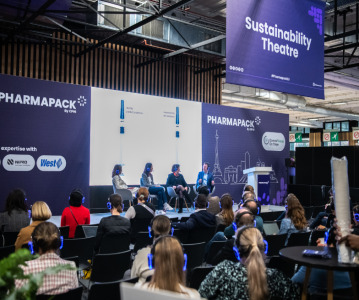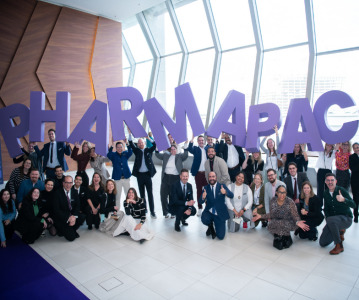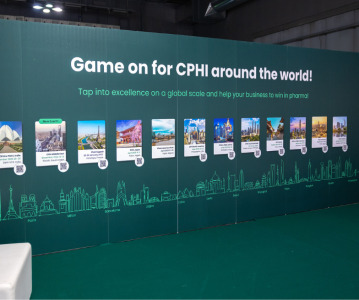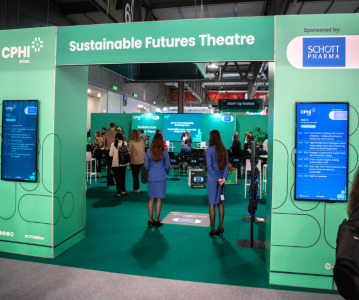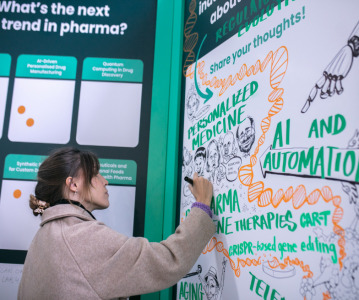New finished product manufacturing hub in the Middle East

Forgotten markets of Africa and Arabia to see increased growth fuelled by international and domestic partnerships and imported APIs.
A new report by CPHI forecasts sizable changes ahead for the pharma markets in the Middle East and Africa over the next few years. It highlights recent regulatory changes, coupled with increased geopolitical stability and rising generics consumption as key drivers in transforming the prospects of pharma manufacturers in the region.
The CPHI Middle East and Africa report – released ahead of the inaugural edition of CPHI MEA (3-5 September 2018, Abu Dhabi) – has identified significant opportunities for a region that is often overlooked by much of international pharma. The event will attract leaders and key decision makers of the pharma industry from the Middle East and Africa, bringing the expertise and reach of the CPHI brand to the heart of this new pharma hub. Running alongside the exhibition, there will be content sessions on the latest trends, keynote addresses, and numerous networking opportunities.
“Our report shows that there two types of market in the region, and both are likely to grow extremely quickly in the near term. The high-income economies offer excellent opportunities for innovative and branded medicines, whilst the free trade agreement between the GCC (Gulf Cooperation Council) nations will undoubtedly increase generics consumption. In addition, high growth economies in Africa (notably Nigeria, Ghana and South Africa) also look a good bet for rapid generics growth over the next 5 years [with compound annual growth rates of around 10% each],” said Cara Turner, Brand Manager, CPHI Middle East & Africa at UBM.
Manufacturers in India look very well placed to capitalise thanks to the recent free trade deal with the GCC – a multinational partnership consisting of Bahrain, Oman, Saudi Arabia, Kuwait, the UAE and Qatar – which has significantly reduced trade barriers. Additionally, the GCC has also set in place a drug price harmonisation strategy to standardise drug prices within the region. The net result is an overall decrease in pricing across the region with generics consumption rising quickly. Reductions across multiple therapeutic areas are to be expected, and the process could even potentially impact drug prices of other non-GCC markets that refer to GCC prices.
However, due the purchasing power and a cultural distrust of cheaper foreign products in the short term, it is more likely that Indian and other API manufacturers will be the largest beneficiary, with local companies providing the final product manufacturing.
CPHI Middle East & Africa 2018 comes with the backing of regional government and pharma associations, and is expected to attract 200 local, regional and international exhibitors from 30 countries and 4,000 attendees.
The report notes that, with a stabilised political situation and gentrifying populations, there are sizable opportunities for manufacturers and CMOs in North Africa to potentially become licensed manufacturers of products. This will enable international companies to penetrate the regional market whilst reducing risk. Stringent registration and packaging requirements also increase the likelihood of local international partnerships rather than the direct import of generics.
In Saudi Arabia, the government is actively trying to increase generic consumption through regulating imported branded drugs and promoting local generics production. In response, the report notes that it may be beneficial for local generic manufacturers (and international firms) to either undergo acquisitions and mergers to protect their market share, or partner with branded internationals to diversify their product mix.
One final trend, is that in light of the new opportunities, foreign direct investment by large pharma and generics companies is increasing with the goal of acquiring local manufacturing facilities – Sanofi’s recent entry in Saudi Arabia is just one notable example.
Cara added: “international companies looking at the opportunities that abound in this region must appreciate cultural business norms. Our feedback from the market says that no matter how large a company or positive its international repute, there is definitely a great deal of importance placed in building personal relationships with potential business partners. It’s also one of the reasons we have introduced Live Pharma Connect, a Match & Meet service, as well as a new Hosted Buyer Programme at the event to help build these new networks.”
However, the report authors conclude it is by no means a simple task for internationals to enter this market. This is due to a variety of drag factors, such as vastly differing spending powers amongst its constituent nations, the lack of a centralised pharmaceutical regulator, and varying preferences for branded products versus generics. In order to achieve success, entry into the MENA market must be thoroughly planned and local insight sought.
Related News
-
News Women in Pharma: Career Design for Women
Our monthly Women in Pharma series highlights the influential lives and works of impactful women working across the pharmaceutical industry, and how the industry can work towards making the healthcare industry and workplace more equitable and inclusive... -
News Pfizer may shift production back to US under Trump pharma tariffs
At the 45th TD Cowen annual healthcare conference in Boston, USA, Pfizer CEO Albert Bourla outlined the potential for Pfizer to shift its overseas drug manufacturing back to the US as pharmaceutical industry players weigh their options against Presiden... -
News Women in Pharma: Connecting accessible pharma packaging to patients – a Pharmapack Special
Throughout our Women in Pharma series, we aim to highlight how CPHI events encourage discussions around diversity, equity, and inclusion initiatives in the pharmaceutical industry. -
News CPHI Podcast Series: Packaging expert perspectives at Pharmapack 2025
This month's podcast episode sounds a little different, covering the latest event in Paris – Pharmapack 2025. Digital Editor Lucy Chard speaks to several experts direct from the floor of the show, bringing you right in on the action.&nbs... -
News Closing 2024 with Editors' picks of top articles from the past year
Coming to the end of 2024 and it’s certainly been a busy year, for CPHI and for the rest of the pharmaceutical and healthcare industry. Topics of conversation throughout the last 12 months have been varied, touching on the technical, to the polit... -
News SCHOTT Pharma’s sustainable journey with CPHI
Sustainability is of paramount importance in the pharmaceutical industry. See how a recent partnership between CPHI and SCHOTT Pharma has helped to highlight and accelerate their sustainability journey to reach global goals. -
News CPHI Podcast Series: Investing in a vision for the future of life sciences
In this episode Lucy Chard is joined by Rajiv Khatau to discuss the importance of looking into new therapeutic areas and some of the more niche areas of pharmaceuticals, and investing in the future of the industry. -
News Lessons from CPHI Milan 2024: Sunny Intervals for Pharma Manufacturing?
As the 2024 CPHI conference wrapped up in Milan, we caught up with L.E.K. Consulting – a global strategy consulting firm with deep expertise in pharma manufacturing – to discuss evolving market perspectives and business outlook.
Recently Visited
Position your company at the heart of the global Pharma industry with a CPHI Online membership
-
Your products and solutions visible to thousands of visitors within the largest Pharma marketplace
-
Generate high-quality, engaged leads for your business, all year round
-
Promote your business as the industry’s thought-leader by hosting your reports, brochures and videos within your profile
-
Your company’s profile boosted at all participating CPHI events
-
An easy-to-use platform with a detailed dashboard showing your leads and performance
